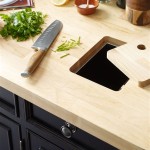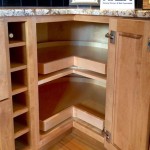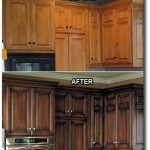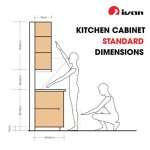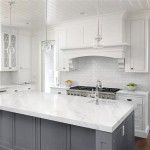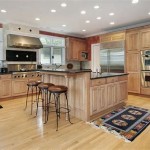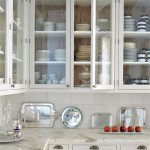What Is The Best Kitchen Lighting?
Kitchen lighting is a multifaceted subject. Determining the "best" kitchen lighting solution requires careful consideration of several factors, including the size and layout of the kitchen, the existing natural light, the user's specific needs and preferences, and the overall aesthetic goals for the space. A well-designed kitchen lighting scheme incorporates multiple layers to ensure adequate illumination for various tasks and to create a comfortable and inviting atmosphere.
A comprehensive approach to kitchen lighting goes beyond simply installing a single overhead fixture. It involves strategically planning lighting placement to eliminate shadows, highlight focal points, and enhance the functionality of different zones within the kitchen. The effective use of different types of lighting, such as ambient, task, and accent lighting, is crucial to achieving optimal results.
The selection of appropriate light fixtures and bulb types is also paramount. Considerations include energy efficiency, color temperature, and the intensity of the light emitted. Understanding the properties of different lighting technologies, such as LED, halogen, and incandescent, allows for informed decisions that align with both practical needs and aesthetic preferences.
Understanding the Three Layers of Kitchen Lighting
The foundation of any successful kitchen lighting design rests upon the principle of layering light. This involves integrating three distinct types of lighting to create a balanced and functional environment:
Ambient Lighting: Often referred to as general lighting, ambient lighting provides overall illumination to the entire kitchen space. Its primary purpose is to create a baseline level of brightness, allowing for safe and comfortable movement. Ambient lighting should be diffused to avoid harsh shadows and glare. Fixtures commonly used for ambient lighting include recessed lighting, chandeliers, pendant lights, and flush-mounted ceiling fixtures. The choice depends on the size and style of the kitchen.
Recessed lighting is a popular choice due to its discreet appearance and ability to provide even distribution of light. A well-planned recessed lighting layout eliminates dark corners and ensures consistent illumination throughout the kitchen. When selecting recessed lighting, it's important to consider the spacing between the fixtures and their proximity to walls to avoid creating unwanted shadows.
Pendant lights and chandeliers can also serve as ambient lighting fixtures, particularly in kitchens with higher ceilings. These fixtures add visual interest and can become a focal point in the room. However, it's crucial to ensure that pendant lights or chandeliers are positioned in a way that doesn't obstruct views or interfere with frequently used areas, such as islands or countertops.
Task Lighting: Task lighting is specifically designed to illuminate work surfaces and areas where specific tasks are performed, such as food preparation, cooking, and dishwashing. Adequate task lighting is essential for safety and efficiency in the kitchen. Common examples of task lighting include under-cabinet lighting, pendant lights over islands, and spotlights directed at specific work areas.
Under-cabinet lighting is arguably the most important type of task lighting in the kitchen. It provides direct illumination to countertops, eliminating shadows that can make it difficult to see while chopping vegetables, reading recipes, or performing other tasks. LED strip lights are a popular choice for under-cabinet lighting due to their energy efficiency, long lifespan, and ability to provide even and consistent light.
Pendant lights over kitchen islands and peninsulas serve both a functional and aesthetic purpose. They provide focused light for food preparation and dining while also adding visual interest to the space. The number and size of pendant lights should be carefully considered based on the size of the island and the desired level of illumination.
Accent Lighting: Accent lighting is used to highlight specific features in the kitchen, such as artwork, architectural details, or decorative objects. It adds visual interest and creates a sense of depth and dimension. Accent lighting is often used to create a more inviting and aesthetically pleasing environment. Examples include spotlights directed at artwork, cabinet lighting to showcase glassware or collectibles, and toe-kick lighting to add a subtle glow to the floor.
Display cabinets with interior lighting can showcase decorative items and create a warm and inviting atmosphere. The type of lighting used in display cabinets can vary, from subtle LED strip lights to miniature spotlights. The choice depends on the items being showcased and the desired effect.
Toe-kick lighting, installed along the base of cabinets, provides a soft and subtle glow that can enhance the ambiance of the kitchen. It also serves a practical purpose by providing low-level illumination for nighttime navigation. LED strip lights are commonly used for toe-kick lighting due to their energy efficiency and ease of installation.
Choosing the Right Light Fixtures and Bulb Types
Selecting the appropriate light fixtures and bulb types is crucial for achieving the desired lighting effect in the kitchen. Considerations include the style of the kitchen, the desired level of brightness, energy efficiency, and color temperature.
Light Fixtures: The style of light fixtures should complement the overall aesthetic of the kitchen. Modern kitchens may benefit from sleek and minimalist fixtures, while traditional kitchens may call for more ornate and decorative options. The size and scale of the fixtures should also be proportionate to the size of the kitchen.
Recessed lighting fixtures come in a variety of sizes and trims to suit different applications. Eyeball recessed lights allow for directional lighting, while baffle trims reduce glare. The choice depends on the specific needs of the space.
Pendant lights are available in a wide range of styles, from simple glass pendants to elaborate multi-light fixtures. The material and finish of the pendant lights should complement the other finishes in the kitchen, such as the cabinets and countertops.
Bulb Types: The choice of bulb type significantly impacts the overall appearance and functionality of the kitchen lighting. The three most common types of bulbs are LED, halogen, and incandescent. Each type has its own advantages and disadvantages.
LED (Light Emitting Diode) bulbs are the most energy-efficient option, consuming significantly less energy than halogen or incandescent bulbs. They also have a much longer lifespan, reducing the need for frequent replacements. LEDs are available in a wide range of color temperatures, allowing for precise control over the warmth or coolness of the light.
Halogen bulbs provide a bright, white light that is similar to natural daylight. They are more energy-efficient than incandescent bulbs but less efficient than LEDs. Halogen bulbs also produce more heat than LEDs, which can be a concern in enclosed fixtures.
Incandescent bulbs are the oldest type of lighting technology and are the least energy-efficient. They produce a warm, yellowish light that is often considered to be flattering. However, incandescent bulbs have a short lifespan and produce a significant amount of heat.
The color temperature of a bulb is measured in Kelvin (K). Lower Kelvin values (e.g., 2700K) produce a warm, yellowish light, while higher Kelvin values (e.g., 5000K) produce a cool, bluish light. For kitchen lighting, a color temperature of around 3000K to 4000K is generally recommended. This provides a balance between warmth and brightness.
Factors Influencing Kitchen Lighting Design
Several factors influence the design and implementation of an effective kitchen lighting scheme. Ignoring these factors can lead to unsatisfactory results, requiring costly revisions and compromising the functionality and aesthetics of the kitchen.
Kitchen Size and Layout: The size and layout of the kitchen significantly impact the number and placement of light fixtures. Larger kitchens typically require more light fixtures to achieve adequate illumination. The layout of the kitchen, including the placement of cabinets, appliances, and islands, dictates the optimal locations for task lighting and accent lighting.
In a small kitchen, it's crucial to maximize the use of natural light. Consider adding or enlarging windows or skylights to increase the amount of daylight entering the space. Strategically placing mirrors can also help to reflect and distribute natural light.
In a large kitchen, it's important to break the space down into zones and provide appropriate lighting for each zone. This ensures that all areas of the kitchen are adequately illuminated and that the lighting is tailored to the specific tasks performed in each zone.
Natural Light: The amount of natural light available in the kitchen should be considered when planning the lighting scheme. If the kitchen receives ample natural light during the day, less artificial lighting may be needed. However, it's still important to provide adequate lighting for nighttime use and for days when natural light is limited.
The direction of the windows and the presence of any obstructions, such as trees or buildings, can affect the amount and quality of natural light entering the kitchen. Consider using light-filtering window treatments to control the amount of sunlight and prevent glare.
User Needs and Preferences: The specific needs and preferences of the users should be taken into account when designing the kitchen lighting scheme. Factors to consider include the age and visual acuity of the users, the types of tasks that are typically performed in the kitchen, and the overall aesthetic preferences.
For example, older individuals may require brighter lighting to compensate for age-related vision changes. Individuals who frequently cook and bake may need more task lighting to ensure accurate and safe food preparation. Those who prefer a more relaxed and intimate atmosphere may opt for warmer color temperatures and dimmer switches.
By carefully considering these factors, it is possible to create a kitchen lighting scheme that is both functional and aesthetically pleasing, enhancing the overall enjoyment and usability of the space.

A Complete Guide To Kitchen Lighting Checkatrade

How To Choose The Best Lighting For Your Kitchen

What Are The Best Kitchen Lighting Ideas

Which Lighting Is Best For Kitchens Interior Design Blogmoonbeam Blog

Best Kitchen Lighting For Your Cooking Space Stefana Silber

Top 3 Essentials For The Best Kitchen Lighting Aterra Designs

5 Types Of Lighting That Are Best For The Kitchen

Best Kitchen Lighting Ideas For 2024

45 Best Kitchen Lighting Ideas And Ceiling Light Fixtures

Best Kitchen Lighting Ideas And Trends To Style Your Foyr

